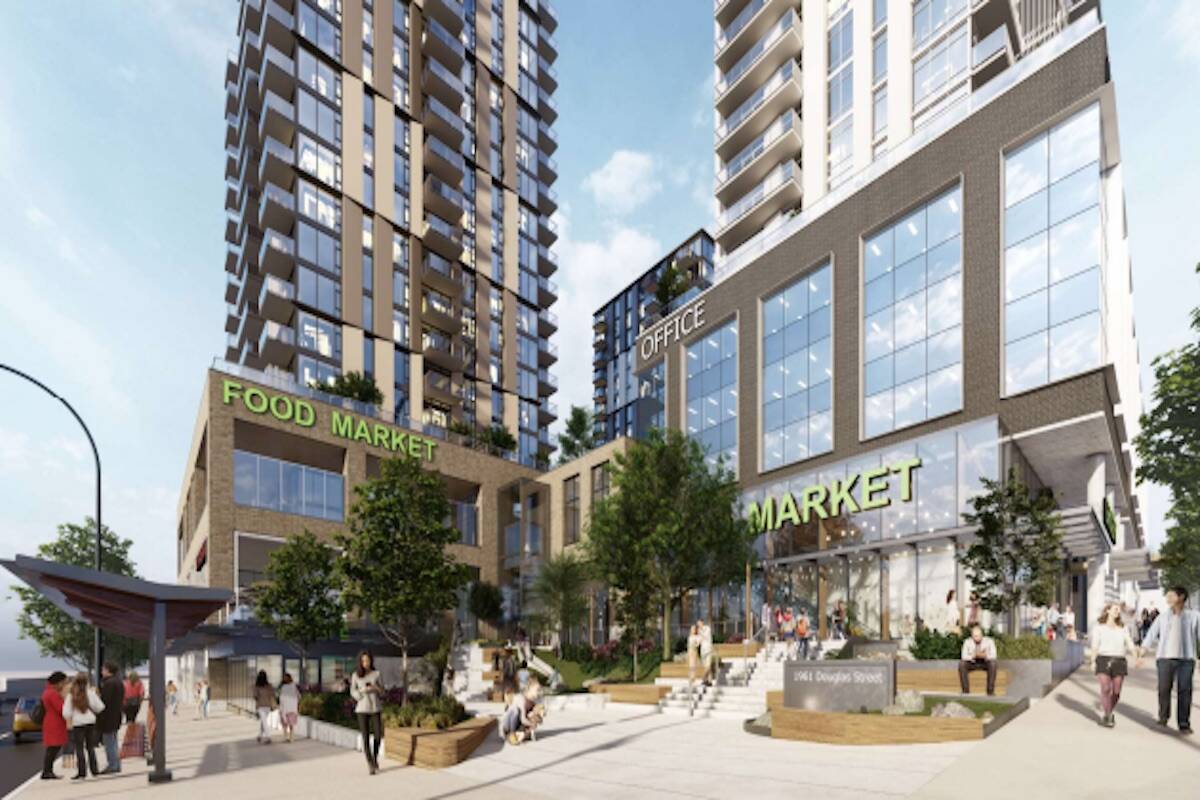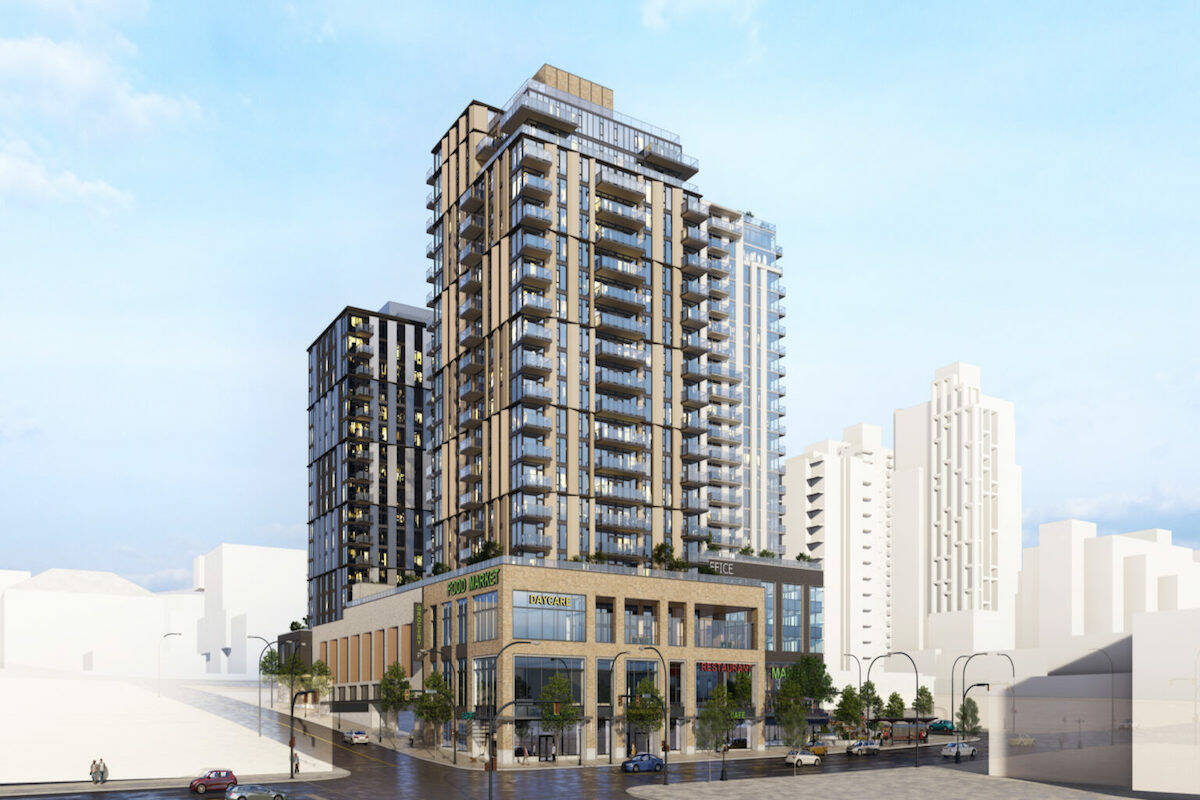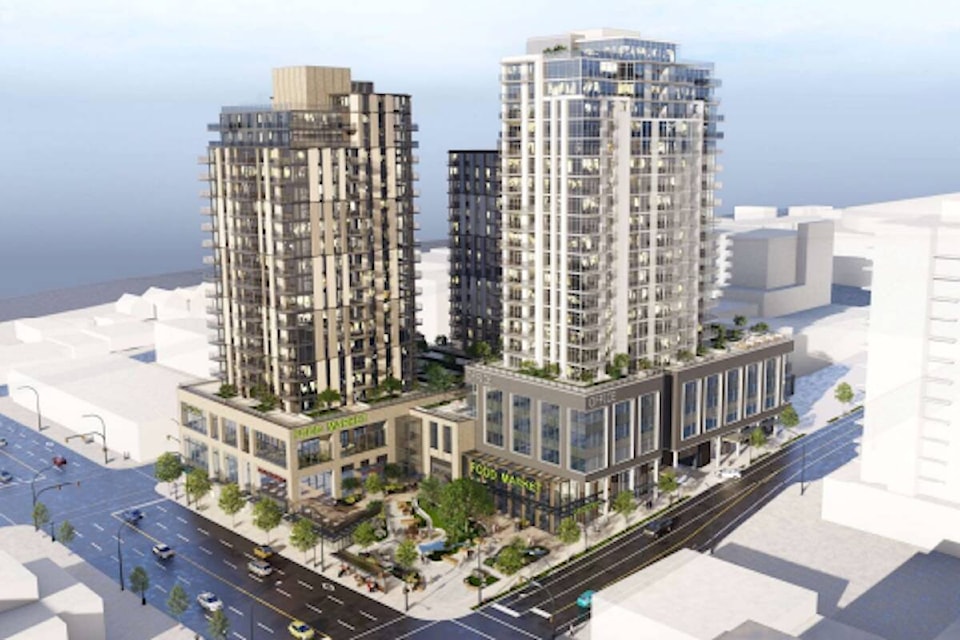Despite the inability to bury power lines and outstanding concerns for trees, an up-to-21-storey project looking to bring a range of housing, a grocery store and other aspects to north downtown will have its day in front of the public.
Chard Development wants to bring a multi-towered redevelopment with 450 units – including below-market-rate spaces alongside rentals and condos for those with median incomes – above a commercial podium along Douglas Street between Caledonia Avenue and Discovery Street.
“I’m hopeful that this project will create a new community hub in this part of town,” said Byron Chard, president and CEO of the namesake company. “This is a fantastic part of town with everything in walking distance and I think we only add to those services and make this a really attractive area for people to live, work and socialize.”
The project is being considered in conjunction with a BC Housing proposal to build an eight-storey supportive building across the street. Tenants of Capital City Centre Hotel – bought by the province during the pandemic to house people experiencing homelessness – would be moved to the BC Housing site before the hotel is torn down for the new build.
“I’m really proud of our application and the diversity of homes that we’ll be able to achieve,” Chard said, noting the new BC Housing site will include support services the hotel lacks.
Council on April 20 unanimously gave the application a public hearing as its inclusion of a daycare, a grocery store in a part of town currently lacking one and various traffic, pedestrian and cycling infrastructure additions to the area.

However, tree-related aspects of Chard’s proposal remain an issue as staff said the current iteration of the project falls short of supporting the city’s urban forest plans – in a part of the city already lacking in tree cover – and there’s uncertainty around the long-term viability of trees in the project’s public plaza due to an underground parkade’s design and possible future maintenance needs.
Chard said creating an urban canopy is important to the company and the project will meet soil depth requirements set out in Victoria’s bylaws to allow trees to “live a healthy and long life.” He added design changes to the parkade were considered, but those would cause ripples throughout the project – impacting the daycare and resulting in shorter distances between towers.
The redevelopment also won’t include undergrounding electrical infrastructure like it initially indicated after BC Hydro suspended a program that sees cost-sharing for such work.
“This is contrary to achieving wider policy objectives that seek to achieve high-quality streetscapes, will restrict the species available for planting to those suitable around overhead powerlines and will have resource implications for the routine work required by city maintenance staff,” a staff report said.

Chard said it’d be a significant expense to bury the lines and doing so could risk the project’s other amenities or the affordability of the lower-income units.
BC Hydro quietly suspended its Beautification Fund, which helps finance burying lines and poles, last summer as resources have been diverted to meet the needs of development across the province.
“We’ve seen an unprecedented demand for new service connections throughout the province and we just want to focus on providing that service,” said Ted Olynyk, a BC Hydro spokesperson.
The program was established in 1972 to diminish the visibility of power lines in highly public areas and while undergrounding lines can reduce impacts on trees, Olynyk said it’s an expensive process and BC Hydro wants to keep rates as low as possible.
Underground lines are often seen as more resilient to storms or crashes and while Olynyk said it’s better to have the wires underground in urban areas when possible, challenges can still arise during outages as it can take a long time for crews to locate and access buried equipment.
READ: 21-storey proposal could see transitional housing site relocated in Victoria
Do you have something to add to this story, or something else we should report on?
Email jake.romphf@blackpress.ca
Follow us on Instagram. Like us on Facebook and follow us on Twitter.
